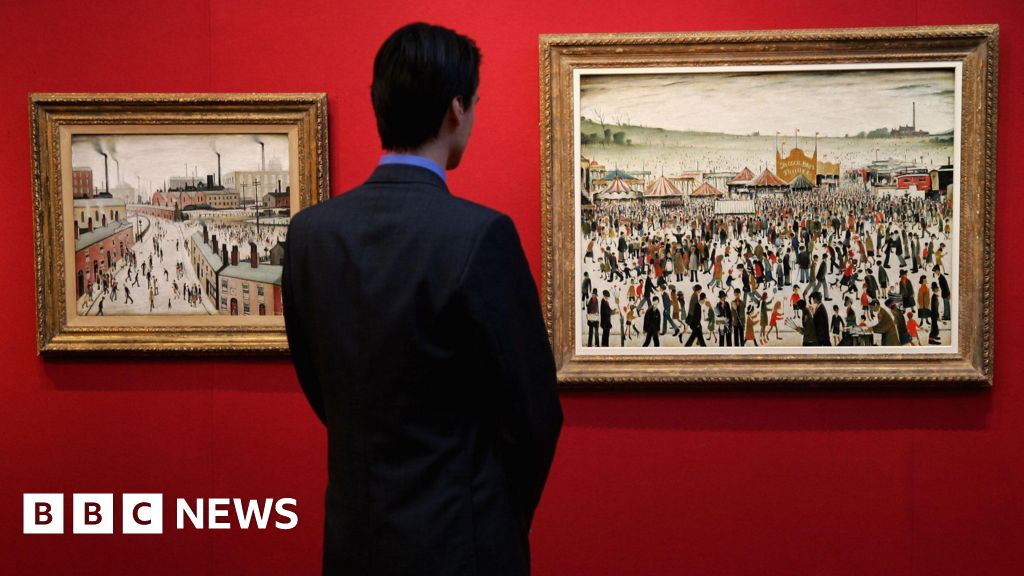By Suzanne Hailey, BBC News
An unearthed archive of an art lover’s interviews with an ageing LS Lowry have revealed he saw himself as “a drifter” who knew a lot of people but “never had a girl”.
Angela Bogg spent hours speaking to the artist towards the end of his life in the 1970s, after becoming an admirer of his urban landscapes while visiting Salford Art Gallery on her lunch break.
The then-27-year-old’s recordings were found by her son after her death in 2022 and have now been donated to the arts centre that bears Lowry’s name.
In them, the artist spoke about being a “homebird” as a young man and how the paintings that made him famous only came about because of a house move.
The chats took place after Mrs Bogg met the director of the art gallery while working as an administrator at the nearby University of Salford.
During a talk she gave in 2020, she said he introduced her to Lowry and a friendship grew between them, which led to her taking a borrowed reel-to-reel recorder to his home in the Tameside village of Mottram in Longdendale.
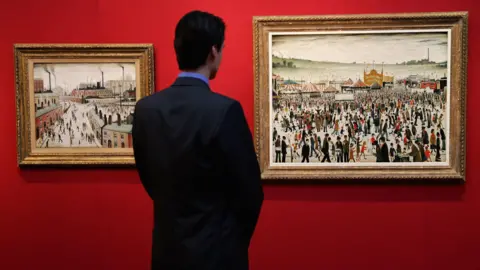 Getty Images
Getty ImagesShe explained they would talk at length and though Lowry was a notoriously private man, the 85-year-old opened up to her across more than 20 hours of recording.
The interviews, which were unearthed in their entirety for the first time after her death in 2022, include Lowry’s reflections on life, love and, of course, his art.
In them, he said he had almost stumbled across his distinctive style of painting when his family moved from Manchester to a particularly urban part of Salford.
“I was interested in portrait painting until I went to live in Pendlebury,” he said.
“The industrial scene got me.
“I disliked [painting industrial scenes] at first, then I got used to it.
“I began to think there is something in it… then I began to think there was a lot in it.”
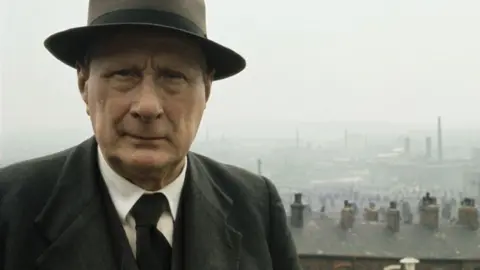 Getty Images
Getty ImagesLowry said he was not sure why he had persevered with art as a young man, but had felt driven to continue.
“I don’t know what kept me on painting,” he said.
“Something did. I don’t know what it was. And I kept on, you see.”
He said it could take him “a year” to finish a piece, due to the detail of “all the little figures”, but when he was active, he would be working on 21 paintings “at a time”.
“I’d leave them for a time and then go back to them,” he said.
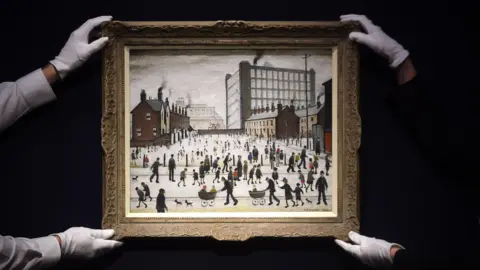 Getty Images
Getty ImagesThe artist said he had started to paint his landscapes after World War One.
“I began to wonder if anybody had ever recorded or done it,” he said.
“I found they hadn’t, so I said ‘I’ll try and do if I can and once I’ve done it, I’ll get out and join some friends in business’.
“But I didn’t join my friends in business.
“Times had changed and I got rather not fond of work.”
He added that from there, he “got used to it and then I got to like it, then I got fascinated and then I began trying to put it on the map if I could”.
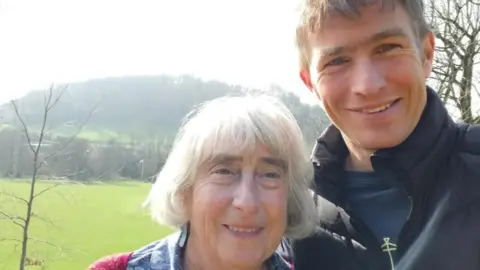 Michael Bogg
Michael BoggLowry spoke about how he had been “a homebird all the time” as a young man, adding the thought of leaving home “never entered my head”.
He also spoke about the lack of a romantic relationship in his life.
“I never had a girl. I never was in love,” he said.
“I knew a lot of people and drifted along and drifted along until I’ve drifted to now and you’re talking to me.
“I’ve been a drifter, you see.”
Michael Bogg said the recordings lay untouched in the loft of his mum’s home in Chorlton-cum-Hardy in Manchester for more than 40 years.
He said while his mother gave a few talks to local groups, the archive was largely unknown and contained drawings and artefacts, along with the interviews.
The 42-year-old said they made for a fascinating listen.
“They were both at different ends of their life and yet they had this mutual connection,” he said.

